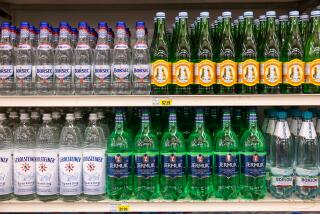A Buyer’s Guide to Rosewater
- Share via
Today you’re not likely to taste rosewater outside of Middle Eastern sweets such as baklava. That doesn’t mean you can’t get it--Indian, Persian and Armenian markets generally carry it, as do the ethnic food sections in many supermarkets.
The most widely available brand seems to be Cortas, which has an excellent fresh rose flavor. Another Lebanese brand, Sadaf, is similar but perhaps less intense.
The Iranian brand Rezaeyeh is closest to what some Americans fear rosewater will be--it smells a bit like rose-scented soap or hand lotion, probably because it’s made from rose concentrate. Another Iranian rosewater, Golchin, is a mixture of rosewater and rose essence; there’s a honeyed note in its scent.
Rosewater is nearly always made from the damask rose (Rosa damascena), a highly aromatic old variety rarely grown in gardens today because of the modern taste for showy blossoms. The Pakistani brand Ahmed is unusual in being made from the cabbage rose (R. centifolia), the variety beloved by 17th century Dutch painters, so it has a distinctly different sort of rose scent.
Persian stores may also stock a water called ab-e nastaran, which is made from the eglantine or sweetbrier rose. You can detect something roselike in its briery, leather-like scent, but this is really a medicinal water, not one for cooking.
More to Read
Eat your way across L.A.
Get our weekly Tasting Notes newsletter for reviews, news and more.
You may occasionally receive promotional content from the Los Angeles Times.








